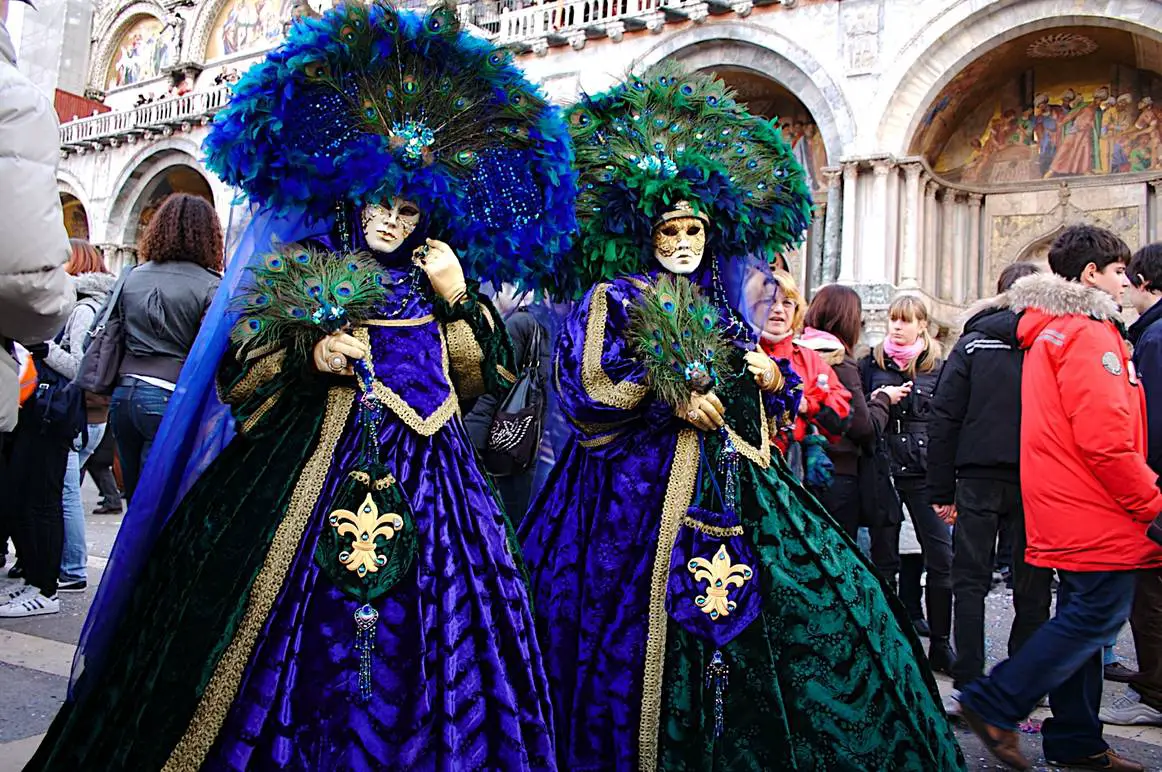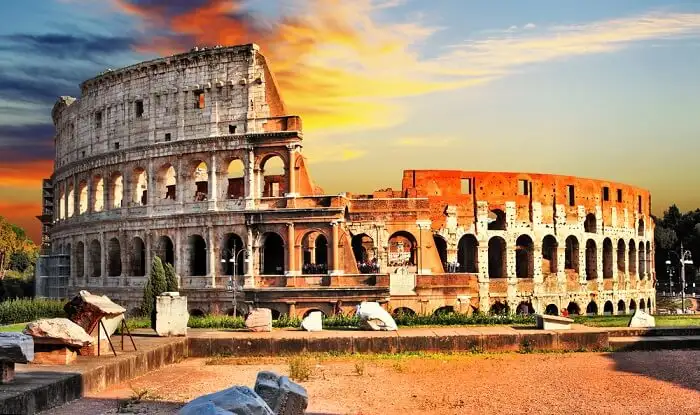Italy is home to some of the most beautiful festivals and celebrations in the world. From the colorful festivities of Carnivals to the traditional Easter Eggs, Italy has something for everyone. There are many holidays and celebrations celebrated throughout the year, but few compare to the joy and enthusiasm of Italian celebrations.
In this guide, we will take a look at some of the most popular and interesting celebrations that take place throughout Italy, including Christmas, Carnival, Easter, and more. Whether you’re looking for a unique cultural experience or just curious about what Italians get up to, this guide has you covered.
Overview of Italian Celebrations
Italy is known for its vibrant and lively celebrations throughout the year. From colorful carnivals to religious festivals, Italians know how to have a good time. The country’s rich history and diverse culture contribute to a wide variety of traditions and festivities that are celebrated with enthusiasm and joy.
One of the most famous Italian celebrations is Carnival, which takes place in various cities across the country. This pre-Lenten festival is marked by elaborate parades, masquerade balls, and lively street parties. The streets are filled with colorful costumes, music, and dancing, creating a festive atmosphere that is contagious.
Easter is another important holiday in Italy, and it is celebrated with great fervor. Religious processions, such as the Via Crucis, are held in many towns and cities, with participants reenacting the Stations of the Cross. Easter Sunday is marked by the traditional Italian Easter lunch, where families gather to enjoy a feast of lamb, artichokes, and a variety of other traditional dishes.
La Festa della Repubblica, or Republic Day, is a national holiday that commemorates the birth of the Italian Republic. It is celebrated on June 2nd with military parades, fireworks, and various cultural events. This day is an opportunity for Italians to show their national pride and honor their country’s history.
Ferragosto, on the other hand, is a celebration of summer. It takes place on August 15th and marks the peak of the summer holiday season. Many Italians take advantage of the long weekend to escape to the beach or the countryside, enjoying picnics and outdoor activities with family and friends.
All Saints’ Day, also known as Ognissanti, is a solemn holiday that is celebrated on November 1st. It is a day to honor and remember the saints and departed loved ones. Italians visit cemeteries to decorate the graves with flowers and light candles as a symbol of remembrance.
Carnival
Italy comes alive with vibrant energy during Carnival, one of the most famous and exciting celebrations in the country. The festivities of Carnival are a beloved tradition that take place in various cities across Italy, each with its own unique flair and customs. This pre-Lenten festival is a time for people to come together and let loose before the somber period of Lent begins.
During Carnival, the streets are transformed into a kaleidoscope of colors, as people don elaborate costumes and masks. It’s a feast for the eyes as you stroll through the bustling streets, filled with laughter, music, and the sound of footsteps dancing to the rhythm. Everywhere you look, there are parades of floats adorned with intricate designs and dazzling decorations.
Masquerade balls are another highlight of Carnival, where attendees dress up in their most elaborate and extravagant costumes. These events are a chance to showcase creativity and individuality, with people often spending weeks or even months designing their outfits.
Carnival is not just about the spectacle, but also about indulgence. Street vendors line the sidewalks, offering a variety of delicious treats and traditional carnival foods, such as frittelle and castagnole. These delectable treats are enjoyed by locals and visitors alike, adding to the festive atmosphere.
Easter
Easter in Italy is a time of deep religious significance and joyful celebration. Italians observe this holiday with great fervor and passion, commemorating the resurrection of Jesus Christ. The festivities begin on Palm Sunday, the week before Easter, with processions and the blessing of palms in churches across the country.
One of the most significant events during Easter is the Via Crucis, or the Way of the Cross. In many towns and cities, participants reenact the Stations of the Cross, carrying a wooden cross through the streets and stopping at each station to pray and reflect on the suffering and death of Jesus. These processions are solemn and deeply moving, creating an atmosphere of devotion and reflection.
On Easter Sunday, the mood shifts from somber to jubilant as Italians come together to celebrate the resurrection of Christ. Families gather for a traditional Easter lunch, which typically includes roasted lamb, artichokes, and other regional specialties. It is a time for loved ones to reconnect and share a meal, expressing gratitude and joy for the blessings of new life and redemption.
Easter Monday, also known as “Pasquetta,” is a national holiday and a time for relaxation and outdoor activities. Many Italians take advantage of the long weekend to enjoy picnics in the countryside or visit friends and family. It is a day to unwind, appreciate nature, and bask in the joy of the Easter season.
Throughout Italy, you will also find beautiful displays of artistry during Easter, such as intricate handmade chocolate eggs. These eggs, often elaborately decorated and filled with surprises, are exchanged as gifts between loved ones. The giving of these eggs symbolizes new life and the breaking of the tomb, as Christ emerged from his tomb on Easter Sunday.
La Festa della Repubblica
La Festa della Repubblica, or Republic Day, is a national holiday in Italy that commemorates the birth of the Italian Republic. It is celebrated every year on June 2nd with great enthusiasm and pride. This day holds a special significance for Italians as it marks the end of monarchy and the establishment of a democratic republic in Italy.
The celebrations of La Festa della Repubblica are marked by various events and festivities throughout the country. One of the most iconic traditions is the military parade held in Rome, where members of the armed forces march in uniform and showcase their skills and equipment. This parade is a symbol of national pride and showcases Italy’s commitment to peace and security.
In addition to the military parade, there are also cultural events, concerts, and exhibitions held across Italy. It is a day when Italians come together to celebrate their country’s history, culture, and achievements. The streets are adorned with the colors of the Italian flag, and people proudly display their patriotism through flags, banners, and traditional costumes.
La Festa della Repubblica is not only a day of celebration but also a day of reflection and gratitude. It is a time to remember the sacrifices made by those who fought for Italian independence and freedom. It is a reminder of the values that unite the Italian people and the progress that has been made since the establishment of the republic.
Ferragosto
Ferragosto is a beloved celebration in Italy that takes place on August 15th, marking the peak of the summer holiday season. Italians take full advantage of the long weekend, embracing the warm weather and enjoying picnics, beach trips, and outdoor activities with family and friends.
The origins of Ferragosto can be traced back to ancient Roman times when Emperor Augustus established a day of rest and relaxation for the Roman Empire. This tradition has evolved over the centuries and is now deeply ingrained in Italian culture.
On Ferragosto, the streets and beaches are bustling with life as Italians escape the heat of the cities and head for the coast or countryside. Families and friends gather for leisurely meals, feasting on delicious local specialties and refreshing drinks. The air is filled with laughter and the sounds of conversation, creating a joyful and carefree atmosphere.
Picnics are a popular way to celebrate Ferragosto, with people setting up elaborate spreads under the shade of trees or on sandy beaches. Fresh fruits, cured meats, cheeses, and homemade desserts are common fare, accompanied by local wines and refreshing beverages. It’s a time to savor the flavors of Italy and appreciate the simple pleasures of life.
In addition to picnics, Ferragosto is also a time for various events and festivities. Many towns and cities organize concerts, outdoor performances, and fireworks displays, adding to the celebratory mood. Streets and squares are adorned with colorful decorations, and lively music fills the air, inviting everyone to join in the festivities.
All Saints’ Day
All Saints’ Day, also known as Ognissanti, is a deeply significant and solemn holiday celebrated in Italy on November 1st. It is a time for Italians to honor and remember the saints and departed loved ones, reflecting on the beauty and fragility of life.
On this day, cemeteries across the country come alive with a sea of vibrant colors as families visit the graves of their loved ones. They lovingly clean the tombstones, decorate them with flowers, and light candles as a symbol of remembrance. It’s a touching and poignant sight to witness, as people come together to honor the memory of those who have passed.
In addition to visiting cemeteries, All Saints’ Day is also a time for prayer and reflection. Many Italians attend mass and participate in religious processions, carrying images of saints and offering prayers for the souls of the departed. Churches are adorned with flowers and candles, creating a serene and peaceful atmosphere.
All Saints’ Day is not a day of mourning but a day of celebration of life and the hope of eternal peace. It serves as a reminder of the love and connection that transcends death and brings comfort to those who have lost loved ones. It is a time for families to come together, support one another, and find solace in the memories and legacies left behind.
Christmas Traditions in Italy
Christmas is a magical time in Italy, filled with rich traditions and customs that have been passed down through generations. Italians truly embrace the spirit of the season, creating a warm and joyful atmosphere that is truly infectious. In Italy, Christmas celebrations begin on December 8th with the Feast of the Immaculate Conception and continue until the Epiphany on January 6th.
One of the most beloved Christmas traditions in Italy is the nativity scene, or “presepe.” These intricate displays can be found in homes, churches, and public spaces across the country. They depict the birth of Jesus in Bethlehem, complete with shepherds, angels, and the three wise men. Italians take great pride in creating their own unique nativity scenes, often using handmade figurines and elaborate scenery.
Another cherished tradition is the Feast of the Seven Fishes, or “La Vigilia.” This meal, traditionally served on Christmas Eve, consists of seven different seafood dishes. It is a time for families to come together, share a delicious meal, and celebrate the anticipation of Christmas Day. Each region of Italy has its own variations on the menu, but some popular dishes include baccalà (salted cod), calamari, and shrimp.
On Christmas Day, families gather for a festive lunch that often includes a variety of meats, such as roasted pork or capon, as well as classic Italian side dishes. The meal is topped off with a selection of sweet treats, including the famous panettone, a light and fluffy cake filled with dried fruit and nuts.
Throughout the holiday season, Italians also enjoy various traditions, such as exchanging gifts, attending midnight Mass, and singing Christmas carols. The streets are adorned with beautiful lights and decorations, creating a truly enchanting atmosphere. Whether you’re strolling through the bustling Christmas markets or sipping hot chocolate in a cozy café, the festive spirit is palpable.


